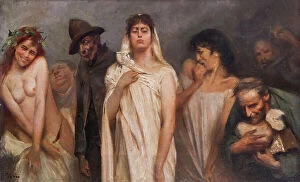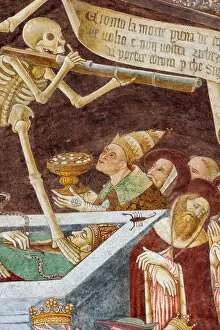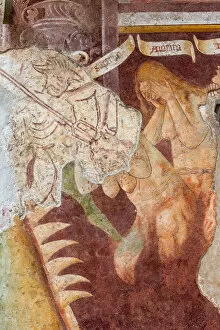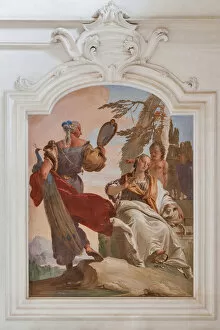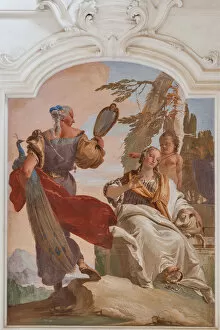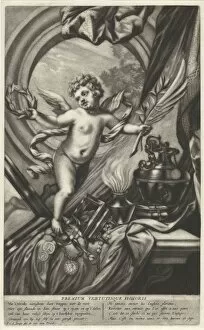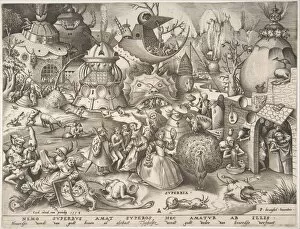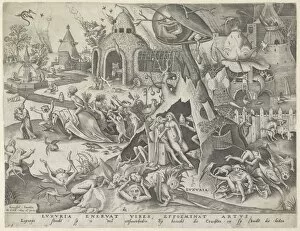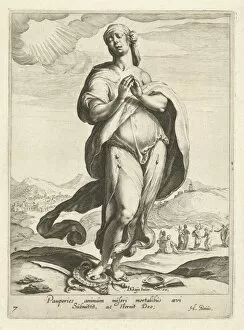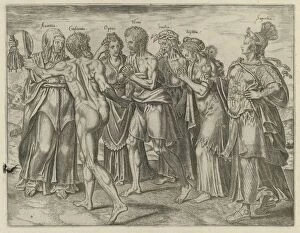Superbia Collection
"Superbia: The Haunting Tale of Pride and its Consequences" In the depths of Hell, a vivid fresco from c
For sale as Licensed Images
Choose your image, Select your licence and Download the media
"Superbia: The Haunting Tale of Pride and its Consequences" In the depths of Hell, a vivid fresco from c. 1394 reveals the intricate details of the sin known as superbia - pride. Death stands tall on a sarcophagus, where both the dead Pope and Emperor lie, reminding us that even those in power are not exempt from its grasp. This theme is further explored in another fresco from 1485 titled "The Triumph of Death and Dance of Death, " where Avarice and Pride take center stage. However, amidst this darkness, there is a glimmer of hope portrayed in an exquisite fresco from 1734. Humility emerges to send away Pride, symbolizing our ability to overcome this destructive force within ourselves. As we delve deeper into Dante's Purgatorio through Canto 11 and Canto 10, we witness the souls burdened by their pride carrying heavy stones while marble sculptures depict their arrogance for eternity. These powerful images serve as cautionary tales about the perils of excessive self-importance. The allegory "Honor Premium Vertutisque Honoris Title" sheds light on how pride can tarnish even the most honorable titles or achievements. It serves as a reminder that true honor lies not in boasting but in humility. A significant representation comes forth with "Pride Superbia Series Seven Deadly Sins 1558 Engraving. " This artwork captures the essence among other deadly sins, emphasizing its prominence among human vices. Through these captivating artworks spanning centuries, we are reminded that pride has been an enduring flaw throughout history. Its consequences are dire; it blinds us to our own faults and distances us from others' empathy. Let these visual narratives be a warning against succumbing to hubris and inspire us towards cultivating humility instead – for it is only then that we can truly rise above our flaws and find redemption.

